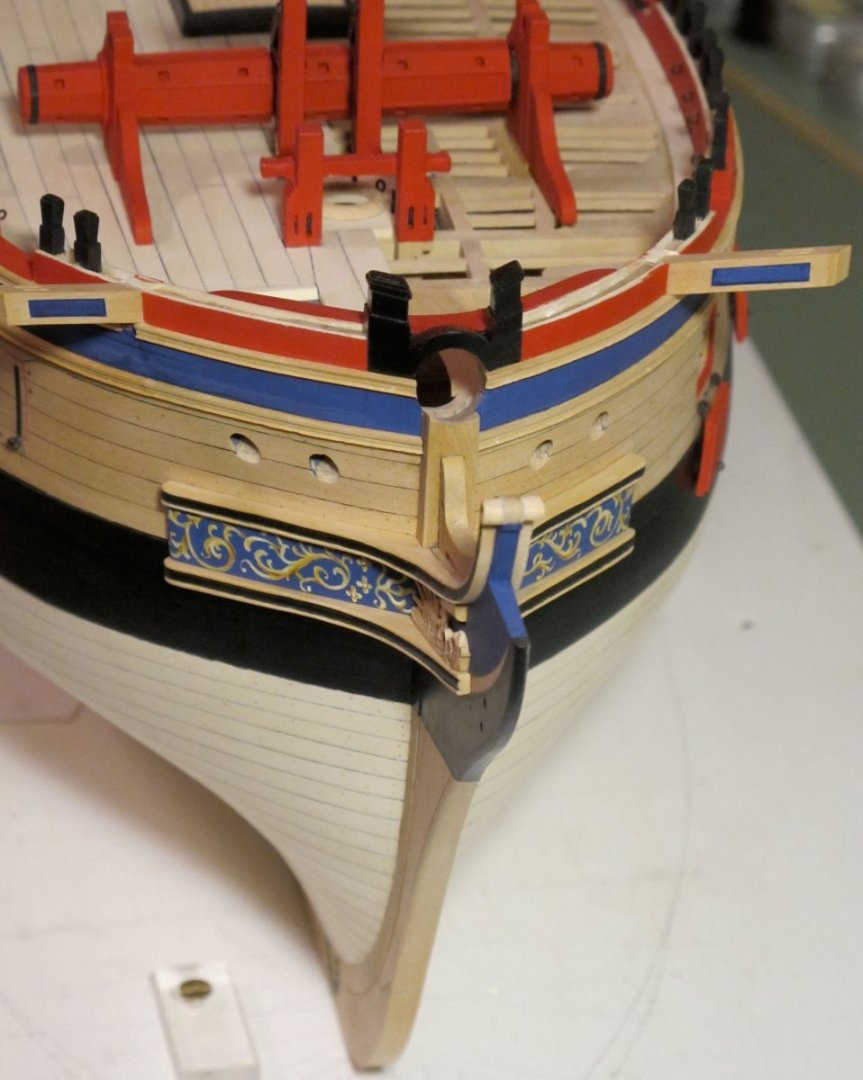-
Posts
13,361 -
Joined
-
Last visited
Content Type
Profiles
Forums
Gallery
Events
Everything posted by druxey
-

HMCSS Victoria 1855 by BANYAN - 1:72
druxey replied to BANYAN's topic in - Build logs for subjects built 1851 - 1900
Hope all will be well from here on in, Pat.- 1,013 replies
-
- gun dispatch vessel
- victoria
-
(and 2 more)
Tagged with:
-
In ship models, any variation generally has a domino effect! It sounds as if you are able to compensate OK, though. That stern is a very tricky area. Looking good so far.
- 146 replies
-
- Harriet Lane
- Model Shipways
-
(and 1 more)
Tagged with:
-
The Van de Velde drawings have been shown to be extremely accurate, so I think you could use those as a reliable guide. The figures on the stern balconies will also assist in determining their size.
-
The pocketed battens are a nice 'extra' touch!
- 51 replies
-
- Model Shipways
- norwegian sailing pram
-
(and 1 more)
Tagged with:
-
Tricky work, applying inside bulwark planking when all the outer detail is already installed!
-
That is a very nicely laid out planking job, Well done!
- 64 replies
-
- amati
- victory models
-
(and 1 more)
Tagged with:
-
Yup; we're interested, Steven! You always find such interesting and different subjects.
- 508 replies
-

Untangling and rerigging or start from scratch?
druxey replied to Rgpracer's topic in Masting, rigging and sails
There were many 'experimental' drawings made; the standard steering wheel didn't need a detailed explanation with the drawing. The example above was obviously a proposal that didn't eventually make the cut. -

Figureheads of English East Indiamen 1750
druxey replied to bruce d's topic in Nautical/Naval History
Although I cannot locate these drawings in his book, the style of illustration is very similar to those of L.G. Carr Laughton. (Old Ship's Figureheads & Sterns, 1925.) -
Alas, I'm of an age to know these things!
- 2,699 replies
-
- heller
- soleil royal
-
(and 9 more)
Tagged with:
-
Remember - the full-size builders didn't have elaborate building stations with jigs! Just plumb lines, squares and measuring tools. It helps to remember to check vertical in all three planes as you erect each frame: 1) vertical as seen from the side 2) at right angles across the keel 3) center of cross-spall centered above the keel No-one will notice, once you model is complete and mounted vertically, that your keel is very slightly canted to one side!
-
HH: you might consider 'progressive' vari-focal lens spectacles. Since I got mine, I've rarely needed an Optivisor - something that i wore extensively over the previous 10 years.
- 2,699 replies
-
- heller
- soleil royal
-
(and 9 more)
Tagged with:
About us
Modelshipworld - Advancing Ship Modeling through Research
SSL Secured
Your security is important for us so this Website is SSL-Secured
NRG Mailing Address
Nautical Research Guild
237 South Lincoln Street
Westmont IL, 60559-1917
Model Ship World ® and the MSW logo are Registered Trademarks, and belong to the Nautical Research Guild (United States Patent and Trademark Office: No. 6,929,264 & No. 6,929,274, registered Dec. 20, 2022)
Helpful Links
About the NRG
If you enjoy building ship models that are historically accurate as well as beautiful, then The Nautical Research Guild (NRG) is just right for you.
The Guild is a non-profit educational organization whose mission is to “Advance Ship Modeling Through Research”. We provide support to our members in their efforts to raise the quality of their model ships.
The Nautical Research Guild has published our world-renowned quarterly magazine, The Nautical Research Journal, since 1955. The pages of the Journal are full of articles by accomplished ship modelers who show you how they create those exquisite details on their models, and by maritime historians who show you the correct details to build. The Journal is available in both print and digital editions. Go to the NRG web site (www.thenrg.org) to download a complimentary digital copy of the Journal. The NRG also publishes plan sets, books and compilations of back issues of the Journal and the former Ships in Scale and Model Ship Builder magazines.





